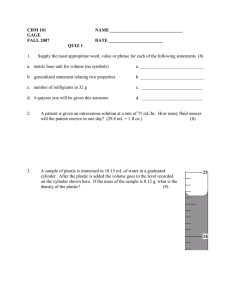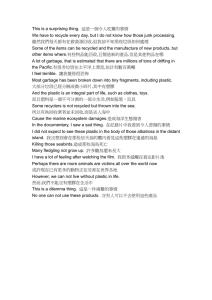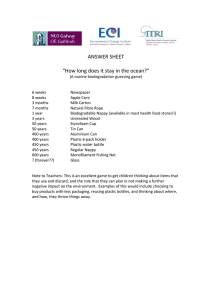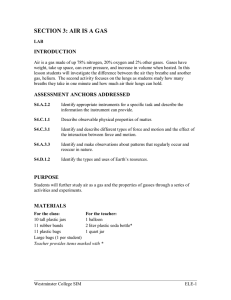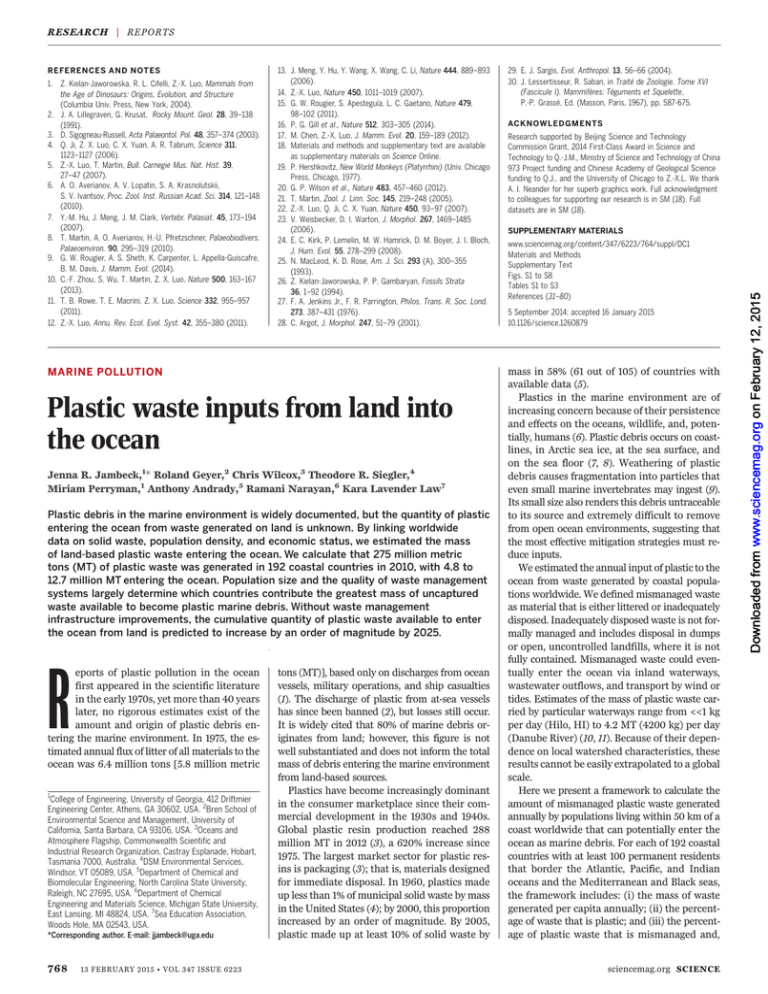
R ES E A RC H | R E PO R TS
1. Z. Kielan-Jaworowska, R. L. Cifelli, Z.-X. Luo, Mammals from
the Age of Dinosaurs: Origins, Evolution, and Structure
(Columbia Univ. Press, New York, 2004).
2. J. A. Lillegraven, G. Krusat, Rocky Mount. Geol. 28, 39–138
(1991).
3. D. Sigogneau-Russell, Acta Palaeontol. Pol. 48, 357–374 (2003).
4. Q. Ji, Z. X. Luo, C. X. Yuan, A. R. Tabrum, Science 311,
1123–1127 (2006).
5. Z.-X. Luo, T. Martin, Bull. Carnegie Mus. Nat. Hist. 39,
27–47 (2007).
6. A. O. Averianov, A. V. Lopatin, S. A. Krasnolutskii,
S. V. Ivantsov, Proc. Zool. Inst. Russian Acad. Sci. 314, 121–148
(2010).
7. Y.-M. Hu, J. Meng, J. M. Clark, Vertebr. Palasiat. 45, 173–194
(2007).
8. T. Martin, A. O. Averianov, H.-U. Pfretzschner, Palaeobiodivers.
Palaeoenviron. 90, 295–319 (2010).
9. G. W. Rougier, A. S. Sheth, K. Carpenter, L. Appella-Guiscafre,
B. M. Davis, J. Mamm. Evol. (2014).
10. C.-F. Zhou, S. Wu, T. Martin, Z. X. Luo, Nature 500, 163–167
(2013).
11. T. B. Rowe, T. E. Macrini, Z. X. Luo, Science 332, 955–957
(2011).
12. Z.-X. Luo, Annu. Rev. Ecol. Evol. Syst. 42, 355–380 (2011).
13. J. Meng, Y. Hu, Y. Wang, X. Wang, C. Li, Nature 444, 889–893
(2006).
14. Z.-X. Luo, Nature 450, 1011–1019 (2007).
15. G. W. Rougier, S. Apesteguía, L. C. Gaetano, Nature 479,
98–102 (2011).
16. P. G. Gill et al., Nature 512, 303–305 (2014).
17. M. Chen, Z.-X. Luo, J. Mamm. Evol. 20, 159–189 (2012).
18. Materials and methods and supplementary text are available
as supplementary materials on Science Online.
19. P. Hershkovitz, New World Monkeys (Platyrrhini) (Univ. Chicago
Press, Chicago, 1977).
20. G. P. Wilson et al., Nature 483, 457–460 (2012).
21. T. Martin, Zool. J. Linn. Soc. 145, 219–248 (2005).
22. Z.-X. Luo, Q. Ji, C. X. Yuan, Nature 450, 93–97 (2007).
23. V. Weisbecker, D. I. Warton, J. Morphol. 267, 1469–1485
(2006).
24. E. C. Kirk, P. Lemelin, M. W. Hamrick, D. M. Boyer, J. I. Bloch,
J. Hum. Evol. 55, 278–299 (2008).
25. N. MacLeod, K. D. Rose, Am. J. Sci. 293 (A), 300–355
(1993).
26. Z. Kielan-Jaworowska, P. P. Gambaryan, Fossils Strata
36, 1–92 (1994).
27. F. A. Jenkins Jr., F. R. Parrington, Philos. Trans. R. Soc. Lond.
273, 387–431 (1976).
28. C. Argot, J. Morphol. 247, 51–79 (2001).
MARINE POLLUTION
Plastic waste inputs from land into
the ocean
Jenna R. Jambeck,1* Roland Geyer,2 Chris Wilcox,3 Theodore R. Siegler,4
Miriam Perryman,1 Anthony Andrady,5 Ramani Narayan,6 Kara Lavender Law7
Plastic debris in the marine environment is widely documented, but the quantity of plastic
entering the ocean from waste generated on land is unknown. By linking worldwide
data on solid waste, population density, and economic status, we estimated the mass
of land-based plastic waste entering the ocean. We calculate that 275 million metric
tons (MT) of plastic waste was generated in 192 coastal countries in 2010, with 4.8 to
12.7 million MT entering the ocean. Population size and the quality of waste management
systems largely determine which countries contribute the greatest mass of uncaptured
waste available to become plastic marine debris. Without waste management
infrastructure improvements, the cumulative quantity of plastic waste available to enter
the ocean from land is predicted to increase by an order of magnitude by 2025.
R
eports of plastic pollution in the ocean
first appeared in the scientific literature
in the early 1970s, yet more than 40 years
later, no rigorous estimates exist of the
amount and origin of plastic debris entering the marine environment. In 1975, the estimated annual flux of litter of all materials to the
ocean was 6.4 million tons [5.8 million metric
1
College of Engineering, University of Georgia, 412 Driftmier
Engineering Center, Athens, GA 30602, USA. 2Bren School of
Environmental Science and Management, University of
California, Santa Barbara, CA 93106, USA. 3Oceans and
Atmosphere Flagship, Commonwealth Scientific and
Industrial Research Organization, Castray Esplanade, Hobart,
Tasmania 7000, Australia. 4DSM Environmental Services,
Windsor, VT 05089, USA. 5Department of Chemical and
Biomolecular Engineering, North Carolina State University,
Raleigh, NC 27695, USA. 6Department of Chemical
Engineering and Materials Science, Michigan State University,
East Lansing, MI 48824, USA. 7Sea Education Association,
Woods Hole, MA 02543, USA.
*Corresponding author. E-mail: jjambeck@uga.edu
768
13 FEBRUARY 2015 • VOL 347 ISSUE 6223
tons (MT)], based only on discharges from ocean
vessels, military operations, and ship casualties
(1). The discharge of plastic from at-sea vessels
has since been banned (2), but losses still occur.
It is widely cited that 80% of marine debris originates from land; however, this figure is not
well substantiated and does not inform the total
mass of debris entering the marine environment
from land-based sources.
Plastics have become increasingly dominant
in the consumer marketplace since their commercial development in the 1930s and 1940s.
Global plastic resin production reached 288
million MT in 2012 (3), a 620% increase since
1975. The largest market sector for plastic resins is packaging (3); that is, materials designed
for immediate disposal. In 1960, plastics made
up less than 1% of municipal solid waste by mass
in the United States (4); by 2000, this proportion
increased by an order of magnitude. By 2005,
plastic made up at least 10% of solid waste by
29. E. J. Sargis, Evol. Anthropol. 13, 56–66 (2004).
30. J. Lessertisseur, R. Saban, in Traité de Zoologie. Tome XVI
(Fascicule I). Mammifères: Téguments et Squelette,
P.-P. Grassé, Ed. (Masson, Paris, 1967), pp. 587-675.
AC KNOWLED GME NTS
Research supported by Beijing Science and Technology
Commission Grant, 2014 First-Class Award in Science and
Technology to Q.-J.M., Ministry of Science and Technology of China
973 Project funding and Chinese Academy of Geological Science
funding to Q.J., and the University of Chicago to Z.-X.L. We thank
A. I. Neander for her superb graphics work. Full acknowledgment
to colleagues for supporting our research is in SM (18). Full
datasets are in SM (18).
SUPPLEMENTARY MATERIALS
www.sciencemag.org/content/347/6223/764/suppl/DC1
Materials and Methods
Supplementary Text
Figs. S1 to S8
Tables S1 to S3
References (31–80)
5 September 2014; accepted 16 January 2015
10.1126/science.1260879
mass in 58% (61 out of 105) of countries with
available data (5).
Plastics in the marine environment are of
increasing concern because of their persistence
and effects on the oceans, wildlife, and, potentially, humans (6). Plastic debris occurs on coastlines, in Arctic sea ice, at the sea surface, and
on the sea floor (7, 8). Weathering of plastic
debris causes fragmentation into particles that
even small marine invertebrates may ingest (9).
Its small size also renders this debris untraceable
to its source and extremely difficult to remove
from open ocean environments, suggesting that
the most effective mitigation strategies must reduce inputs.
We estimated the annual input of plastic to the
ocean from waste generated by coastal populations worldwide. We defined mismanaged waste
as material that is either littered or inadequately
disposed. Inadequately disposed waste is not formally managed and includes disposal in dumps
or open, uncontrolled landfills, where it is not
fully contained. Mismanaged waste could eventually enter the ocean via inland waterways,
wastewater outflows, and transport by wind or
tides. Estimates of the mass of plastic waste carried by particular waterways range from <<1 kg
per day (Hilo, HI) to 4.2 MT (4200 kg) per day
(Danube River) (10, 11). Because of their dependence on local watershed characteristics, these
results cannot be easily extrapolated to a global
scale.
Here we present a framework to calculate the
amount of mismanaged plastic waste generated
annually by populations living within 50 km of a
coast worldwide that can potentially enter the
ocean as marine debris. For each of 192 coastal
countries with at least 100 permanent residents
that border the Atlantic, Pacific, and Indian
oceans and the Mediterranean and Black seas,
the framework includes: (i) the mass of waste
generated per capita annually; (ii) the percentage of waste that is plastic; and (iii) the percentage of plastic waste that is mismanaged and,
sciencemag.org SCIENCE
Downloaded from www.sciencemag.org on February 12, 2015
RE FE RENCES AND N OT ES
RE S EAR CH | R E P O R T S
therefore, has the potential to enter the ocean
as marine debris (12) (data S1). By applying a
range of conversion rates from mismanaged
waste to marine debris, we estimated the mass
of plastic waste entering the ocean from each
country in 2010, used population growth data
(13) to project the increase in mass to 2025, and
predicted growth in the percentage of waste
that is plastic. Lacking information on future
Fig. 1. Global map with each country shaded according to the estimated mass of mismanaged plastic waste [millions of metric tons (MT)] generated
in 2010 by populations living within 50 km of the coast. We considered 192 countries. Countries not included in the study are shaded white.
Table 1. Waste estimates for 2010 for the top 20 countries ranked by mass of mismanaged plastic waste (in units of millions of metric tons per year).
Econ classif., economic classification; HIC, high income; UMI, upper middle income; LMI, lower middle income; LI, low income (World Bank definitions based
on 2010 Gross National Income). Mismanaged waste is the sum of inadequately managed waste plus 2% littering. Total mismanaged plastic waste is
calculated for populations within 50 km of the coast in the 192 countries considered. pop., population; gen., generation; ppd, person per day; MMT, million
metric tons.
Rank
1
2
3
4
5
6
7
8
9
10
11
12
13
14
15
16
17
18*
19
20
Country
China
Indonesia
Philippines
Vietnam
Sri Lanka
Thailand
Egypt
Malaysia
Nigeria
Bangladesh
South Africa
India
Algeria
Turkey
Pakistan
Brazil
Burma
Morocco
North Korea
United States
Econ. Coastal pop.
classif. [millions]
UMI
LMI
LMI
LMI
LMI
UMI
LMI
UMI
LMI
LI
UMI
LMI
UMI
UMI
LMI
UMI
LI
LMI
LI
HIC
262.9
187.2
83.4
55.9
14.6
26.0
21.8
22.9
27.5
70.9
12.9
187.5
16.6
34.0
14.6
74.7
19.0
17.3
17.3
112.9
Waste gen.
% plastic % mismanaged
rate
waste
waste
[kg/ppd]
1.10
0.52
0.5
0.79
5.1
1.2
1.37
1.52
0.79
0.43
2.0
0.34
1.2
1.77
0.79
1.03
0.44
1.46
0.6
2.58
11
11
15
13
7
12
13
13
13
8
12
3
12
12
13
16
17
5
9
13
76
83
83
88
84
75
69
57
83
89
56
87
60
18
88
11
89
68
90
2
Plastic
Mismanaged % of total
marine
mismanaged
plastic
debris
plastic
waste
[MMT/year]
waste
[MMT/year]
8.82
3.22
1.88
1.83
1.59
1.03
0.97
0.94
0.85
0.79
0.63
0.60
0.52
0.49
0.48
0.47
0.46
0.31
0.30
0.28
27.7
10.1
5.9
5.8
5.0
3.2
3.0
2.9
2.7
2.5
2.0
1.9
1.6
1.5
1.5
1.5
1.4
1.0
1.0
0.9
1.32–3.53
0.48–1.29
0.28–0.75
0.28–0.73
0.24–0.64
0.15–0.41
0.15–0.39
0.14–0.37
0.13–0.34
0.12–0.31
0.09–0.25
0.09–0.24
0.08–0.21
0.07–0.19
0.07–0.19
0.07–0.19
0.07–0.18
0.05–0.12
0.05–0.12
0.04–0.11
*If considered collectively, coastal European Union countries (23 total) would rank eighteenth on the list
SCIENCE sciencemag.org
13 FEBRUARY 2015 • VOL 347 ISSUE 6223
769
R ES E A RC H | R E PO R TS
global infrastructure development, the projection represents a business-as-usual scenario.
We estimate that 2.5 billion MT of municipal
solid waste was generated in 2010 by 6.4 billion
people living in 192 coastal countries (93% of
the global population). This estimate is broadly
consistent with an estimated 1.3 billion MT of
waste generated by 3 billion people in urban
centers globally (5). Approximately 11% (275 million MT) of the waste generated by the total
population of these 192 countries is plastic. We
expect plastic waste to roughly track plastic
resin production (270 million MT in 2010) (3),
with differences resulting from the time lag in
disposal of durable goods (lifetime of years to
decades), for example. Scaling by the population
living within 50 km of the coast (those likely to
generate most of the waste becoming marine
debris), we estimate that 99.5 million MT of
plastic waste was generated in coastal regions
in 2010. Of this, 31.9 million MT were classified
as mismanaged and an estimated 4.8 to 12.7 million MT entered the ocean in 2010, equivalent to
1.7 to 4.6% of the total plastic waste generated in
those countries.
Our estimate of plastic waste entering the
ocean is one to three orders of magnitude greater
than the reported mass of floating plastic debris
in high-concentration ocean gyres and also globally (14–17). Although these ocean estimates represent only plastics that are buoyant in seawater
(mainly polyethylene and polypropylene), in
2010 those resins accounted for 53% of plastic
production in North America and 66% of plastic in the U.S. waste stream (4, 18). Because no
global estimates exist for other sources of plastic
into the ocean (e.g., losses from fishing activities
or at-sea vessels, or input from natural disasters),
we do not know what fraction of total plastic
input our land-based waste estimate represents.
Fig. 2. Estimated mass of mismanaged plastic waste (millions of metric tons) input to
the ocean by populations living within 50 km
of a coast in 192 countries, plotted as a cumulative sum from 2010 to 2025. Estimates reflect
assumed conversion rates of mismanaged plastic
waste to marine debris (high, 40%; mid, 25%; low,
15%). Error bars were generated using mean and
standard error from the predictive models for mismanaged waste fraction and percent plastic in the
waste stream (12).
770
13 FEBRUARY 2015 • VOL 347 ISSUE 6223
Our framework was designed to compute, from
the best-available data, an order-of-magnitude
estimate of the amount of mismanaged plastic
waste potentially entering the ocean worldwide.
It is also a useful tool to evaluate the factors determining the largest sources of mismanaged
plastic waste. The amount of mismanaged plastic
waste generated by the coastal population of a
single country ranges from 1.1 MT to 8.8 million MT
per year, with the top 20 countries’ mismanaged
plastic waste encompassing 83% of the total in
2010 (Fig. 1 and Table 1). Total annual waste generation is mostly a function of population size,
with the top waste-producing countries having
some of the largest coastal populations. However, the percentage of mismanaged waste is also
important when assessing the largest contributors of waste that is available to enter the environment. Sixteen of the top 20 producers are
middle-income countries, where fast economic
growth is probably occurring but waste management infrastructure is lacking (the average
mismanaged waste fraction is 68%). Only two of
the top 20 countries have mismanaged fractions
<15%; here, even a relatively low mismanaged
rate results in a large mass of mismanaged plastic waste because of large coastal populations
and, especially in the United States, high per
capita waste generation.
Assuming no waste management infrastructure improvements, the cumulative quantity of
plastic waste available to enter the marine environment from land is predicted to increase
by an order of magnitude by 2025 (Fig. 2 and
table S1). The predicted geographic distribution of mismanaged plastic waste in 2025 does
not change substantially, although the disparity
between developing and industrialized countries
grows (table S2). For example, mismanaged plastic waste in the United States increases by 22%,
whereas in the top five countries it more than
doubles. The increase in these middle-income
countries results from population growth, waste
generation rates for 2025 that are consistent
with economic growth (5), and a projected increase in plastic in the waste stream.
The analytical framework can also be used to
evaluate potential mitigation strategies. For example, if the fraction of mismanaged waste were
reduced by 50% (i.e., a 50% increase in adequate
disposal of waste) in the 20 top-ranked countries,
the mass of mismanaged plastic waste would
decrease 41% by 2025. This falls to 34% if the
reduction is only applied to the top 10 countries
and to 26% if applied to the top 5. To achieve a
75% reduction in the mass of mismanaged plastic waste, waste management would have to be
improved by 85% in the 35 top-ranked countries.
This strategy would require substantial infrastructure investment primarily in low- and middleincome countries.
Alternatively, reduced waste generation and
plastic use would also decrease the amount of
mismanaged plastic waste. If per capita waste
generation were reduced to the 2010 average
(1.7 kg/day) in the 91 coastal countries that
exceed it, and the percent plastic in the waste
stream were capped at 11% (the 192-country average in 2010), a 26% decrease would be achieved
by 2025. This strategy would target higher-income
countries and might require smaller global investments. With a combined strategy, in which
total waste management is achieved (0% mismanaged waste) in the 10 top-ranked countries
and plastic waste generation is capped as described above, a 77% reduction could be realized, reducing the annual input of plastic waste
to the ocean to 2.4 to 6.4 million MT by 2025
(table S3).
Sources of uncertainty in our estimates result from the relatively few measurements of
waste generation, characterization, collection,
and disposal, especially outside of urban centers.
Even where data were available, methodologies
were not always consistent, and some activities
were not accounted for, such as illegal dumping
(even in high-income countries) and ad hoc recycling or other informal waste collection (especially in low-income countries). In addition, we
did not address international import and export
of waste, which would affect national estimates
but not global totals. Although national estimates
are somewhat sensitive to the model predicting
the percentage of mismanaged waste, the global
estimate and ranking of top countries are not.
The long-term projections are also sensitive to
the model predicting growth of plastic in the
waste stream; historical growth may not be a
good indicator of future trends (12). The inclusion of the economic cost of implementation,
as well as socio-cultural, environmental, and
other factors that affect infrastructure development or behavioral change, would improve
the evaluation of mitigation strategies (19).
We will not reach a global “peak waste” before 2100 (20). Our waste will continue to grow
with increased population and increased per
capita consumption associated with economic
growth, especially in urban areas and developing
African countries (see supplementary materials).
Historically, waste management by burying or
burning waste was sufficient for inert or biodegradable waste, but the rapid growth of synthetic plastics in the waste stream requires a
paradigm shift. Long-term solutions will likely
include waste reduction and “downstream” waste
management strategies such as expanded recovery systems and extended producer responsibility (21, 22). Improving waste management
infrastructure in developing countries is paramount and will require substantial resources and
time. While such infrastructure is being developed, industrialized countries can take immediate action by reducing waste and curbing the
growth of single-use plastics.
REFERENCES AND NOTES
1. National Research Council (U.S.) Study Panel on Assessing
Potential Ocean Pollutants, Assessing Potential Ocean
Pollutants: A Report of the Study Panel on Assessing Potential
Ocean Pollutants to the Ocean Affairs Board, Commission on
Natural Resources, National Research Council (National
Academy of Sciences, Washington, DC, 1975).
2. International Maritime Organization, “International Convention
for the Prevention of Pollution from Ships (MARPOL),
annex V prevention of pollution by garbage from ships”
sciencemag.org SCIENCE
RE S EAR CH | R E P O R T S
3.
4.
5.
6.
7.
8.
9.
10.
11.
(International Maritime Organization, London, 1988); www.imo.org/
Environment/mainframe.asp?topic_id=297.
“Plastics – the facts 2013” (PlasticsEurope, Brussels, Belgium,
2013); www.plasticseurope.org/Document/plastics-the-facts2013.aspx?FolID=2.
“Municipal solid waste generation, recycling, and disposal
in the United States: Facts and figures for 2010” [U.S.
Environmental Protection Agency (EPA), Washington, DC,
2011]; www.epa.gov/solidwaste/nonhaz/municipal/pubs/
msw_2010_rev_factsheet.pdf
D. Hoornweg, P. Bhada-Tata, “What a waste: A global
review of solid waste management” (The World Bank,
Washington, DC, 2012); https://openknowledge.worldbank.
org/handle/10986/17388
R. C. Thompson, C. J. Moore, F. S. vom Saal, S. H. Swan,
Philos. Trans. R. Soc. London Ser. B 364, 2153–2166
(2009).
D. K. A. Barnes, F. Galgani, R. C. Thompson, M. Barlaz, Philos.
Trans. R. Soc. London Ser. B 364, 1985–1998 (2009).
R. W. Obbard et al., Earth’s Future 2, 315–320 (2014).
M. C. Goldstein, D. S. Goodwin, PeerJ 1, e184 (2013).
H. S. Carson et al., Mar. Environ. Res. 84, 76–83 (2013).
A. Lechner et al., Environ. Pollut. 188, 177–181 (2014).
12. Materials and methods are available as supplementary
materials on Science Online.
13. “Probabilistic projections of total population: Median and
confidence intervals,” (United Nations, Department of
Economic and Social Affairs, New York, 2012);
http://esa.un.org/unpd/ppp/Data-Output/
UN_PPP2010_output-data.htm.
14. K. L. Law et al., Science 329, 1185–1188 (2010).
15. K. L. Law et al., Environ. Sci. Technol. 48, 4732–4738
(2014).
16. A. Cózar et al., Proc. Natl. Acad. Sci. U.S.A. 111, 10239–10244
(2014).
17. M. Eriksen et al., PLOS ONE 9, e111913 (2014).
18. “2013 resin review” (American Chemistry Council, Washington,
DC, 2013).
19. R. E. Marshall, K. Farahbakhsh, Waste Manag. 33, 988–1003 (2013).
20. D. Hoornweg, P. Bhada-Tata, C. Kennedy, Nature 502,
615–617 (2013).
21. M. Braungart, Nature 494, 174–175 (2013).
22. T. Lindhqvist, K. Lidgren, in Ministry of the Environment, From
the Cradle to the Grave - Six Studies of the Environmental
Impact of Products (Ministry of the Environment, Stockholm,
Sweden, 1990), pp. 7–44.
VIRAL REPLICATION
Structural basis for RNA replication
by the hepatitis C virus polymerase
Todd C. Appleby,1* Jason K. Perry,1 Eisuke Murakami,1 Ona Barauskas,1 Joy Feng,1
Aesop Cho,1 David Fox III,2 Diana R. Wetmore,2 Mary E. McGrath,1 Adrian S. Ray,1
Michael J. Sofia,1 S. Swaminathan,1 Thomas E. Edwards2*
Nucleotide analog inhibitors have shown clinical success in the treatment of hepatitis
C virus (HCV) infection, despite an incomplete mechanistic understanding of NS5B, the
viral RNA-dependent RNA polymerase. Here we study the details of HCV RNA replication
by determining crystal structures of stalled polymerase ternary complexes with enzymes,
RNA templates, RNA primers, incoming nucleotides, and catalytic metal ions during both
primed initiation and elongation of RNA synthesis. Our analysis revealed that highly
conserved active-site residues in NS5B position the primer for in-line attack on the
incoming nucleotide. A b loop and a C-terminal membrane–anchoring linker occlude the
active-site cavity in the apo state, retract in the primed initiation assembly to enforce
replication of the HCV genome from the 3′ terminus, and vacate the active-site cavity
during elongation. We investigated the incorporation of nucleotide analog inhibitors,
including the clinically active metabolite formed by sofosbuvir, to elucidate key molecular
interactions in the active site.
H
epatitis C virus (HCV) is a positive-sense,
single-stranded RNA virus of the family
Flaviviridae and genus Hepacivirus and
is the cause of hepatitis C in humans (1).
Long-term infection with HCV can lead to
end-stage liver disease, including hepatocellular
carcinoma and cirrhosis, making hepatitis C
the leading cause of liver transplantation in the
United States (2). Direct-acting antiviral drugs
were approved in 2011, but they exhibited limited
efficacy and had the potential for adverse side
effects (3). The catalytic core of the viral replication complex, the NS5B RNA-dependent RNA
1
Gilead Sciences, 333 Lakeside Drive, Foster City, CA 94404,
USA. 2Beryllium, 7869 NE Day Road West, Bainbridge Island,
WA 98110, USA.
*Corresponding author. E-mail: todd.appleby@gilead.com
(T.C.A); tedwards@be4.com (T.E.E)
SCIENCE sciencemag.org
polymerase (RdRp), supports a staggering rate of
viral production, estimated to be 1.3 × 1012 virions produced per day in each infected patient
(4). Because the NS5B polymerase active site is
highly conserved, nucleotide analog inhibitors
offer advantages over other classes of HCV drugs,
including activity across different viral genotypes
and a high barrier to the development of resistance (5, 6). The nucleotide prodrug sofosbuvir
was recently approved for combination treatment
of chronic HCV (7, 8).
One substantial obstacle for the rapid discovery of effective nucleotide-based drugs for HCV
was the lack of molecular detail concerning substrate recognition during replication. NS5B contains several noncanonical polymerase elements,
including a C-terminal membrane anchoring tail
and a thumb domain b-loop insertion (9–11), that
are implicated in RNA synthesis initiation (12).
AC KNOWLED GME NTS
We thank M. A. Barlaz and N. Starr for critical discussions and
L. Amaral-Zettler, M. G. Chapman, G. Leonard, and R. Williams
for helpful reading of the manuscript. We also thank the
anonymous reviewers for their constructive comments. This
work was conducted within the Marine Debris Working Group at
the National Center for Ecological Analysis and Synthesis,
University of California, Santa Barbara, with support from the
Ocean Conservancy. Our data and model can be found at http://
jambeck.engr.uga.edu/landplasticinput and in the supplementary
materials.
SUPPLEMENTARY MATERIALS
www.sciencemag.org/content/347/6223/768/suppl/DC1
Materials and Methods
Supplementary Text
Fig. S1
Tables S1 to S6
References (23–30)
Data S1
25 August 2014; accepted 16 January 2015
10.1126/science.1260352
To gain insight into the mechanism of HCV RNA
replication and its inhibition by nucleotide analog inhibitors, we determined atomic-resolution
ternary structures of NS5B in both primed initiation and elongation states.
Because traditional approaches failed to yield
ternary complexes (see the supplementary materials), we prepared multiple stalled enzyme-RNAnucleotide ternary complex structures containing
several designed features. First, we used NS5B
from the JFH-1 genotype 2a isolate of HCV, which
is extraordinarily efficient at RNA synthesis (13).
Second, we exploited a conformational stabilization strategy that had been developed for structural analysis of G protein–coupled receptors (14).
We hypothesized that a triple resistance NS5B
mutant isolated under selective pressure of a
guanosine analog inhibitor that exhibits 1.5 times
the initiation activity of the wild type (15) might
stabilize a specific conformational state along
the initiation pathway. Indeed, this triple mutant
exhibits a substantial structural rearrangement
of the polymerase (15), which is consistent with
the structural rearrangement observed in binary
complexes of a b-loop deletion mutant bound to
primer-template RNA (16). The triple mutant was
able to incorporate native and nucleotide analog
inhibitors with the RNA samples used in structure
determination (fig. S1). The use of nucleotide
diphosphate substrates rather than nucleotide
triphosphates (fig. S2) generates stalled polymerase
complexes in a catalytically relevant conformation. Ternary complexes could be obtained only
with Mn2+, which lowers the Michaelis constant
(Km) of the initiating nucleotide (17) and increases
the activity of NS5B 20-fold relative to Mg2+ (18),
and only with a nucleotide/Mn2+/double-stranded
RNA ratio of 1.0/0.6/0.2. These approaches designed to stabilize the incoming nucleotide allowed for soaking experiments targeting several
distinct assemblies.
Hepatitis C virus NS5B initiates RNA synthesis
by a primer-independent mechanism. Two slow
steps in the catalytic pathway have been identified,
including the formation of an initial dinucleotide
13 FEBRUARY 2015 • VOL 347 ISSUE 6223
77 1
Plastic waste inputs from land into the ocean
Jenna R. Jambeck et al.
Science 347, 768 (2015);
DOI: 10.1126/science.1260352
This copy is for your personal, non-commercial use only.
If you wish to distribute this article to others, you can order high-quality copies for your
colleagues, clients, or customers by clicking here.
The following resources related to this article are available online at
www.sciencemag.org (this information is current as of February 12, 2015 ):
Updated information and services, including high-resolution figures, can be found in the online
version of this article at:
http://www.sciencemag.org/content/347/6223/768.full.html
Supporting Online Material can be found at:
http://www.sciencemag.org/content/suppl/2015/02/11/347.6223.768.DC1.html
A list of selected additional articles on the Science Web sites related to this article can be
found at:
http://www.sciencemag.org/content/347/6223/768.full.html#related
This article cites 14 articles, 4 of which can be accessed free:
http://www.sciencemag.org/content/347/6223/768.full.html#ref-list-1
This article appears in the following subject collections:
Geochemistry, Geophysics
http://www.sciencemag.org/cgi/collection/geochem_phys
Science (print ISSN 0036-8075; online ISSN 1095-9203) is published weekly, except the last week in December, by the
American Association for the Advancement of Science, 1200 New York Avenue NW, Washington, DC 20005. Copyright
2015 by the American Association for the Advancement of Science; all rights reserved. The title Science is a
registered trademark of AAAS.
Downloaded from www.sciencemag.org on February 12, 2015
Permission to republish or repurpose articles or portions of articles can be obtained by
following the guidelines here.


